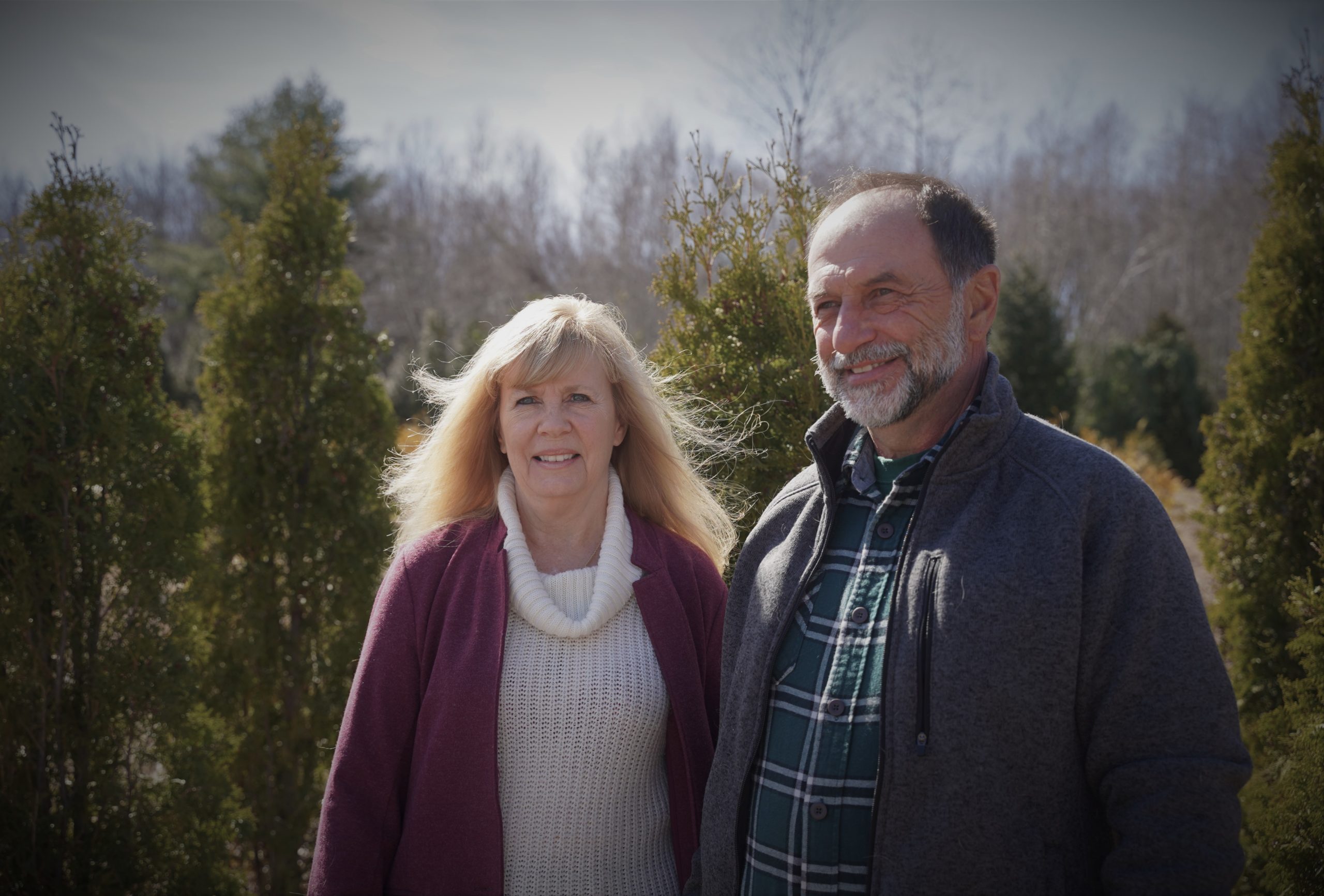BURRILLVILLE – The spring sun shines on a hidden tract of land in a residential neighborhood where vibrant evergreens stand tall and ready for transplanting. Arthur Armstrong is growing green giant arborvitae at A Way Nurseries in Harrisville, where he provides plants for wholesalers and landscapers.
Some say that like singing or dancing, a green thumb is a talent. But Armstrong’s profession is not only an art – it’s a skill. The Harrisville grower began learning his trade at age six under the guidance of his father, an experienced nurseryman.
The son specializes in plants that are sometimes used as a “living fence,” he says. The old saw that good fences make good neighbors might hold, for the arborvitae trees Armstrong grows can easily block off a neighbor’s view.
The vegetation rapidly increases in size, moving skyward some three feet or so a year. Green giant arborvitae can eventually reach heights of more than 50 feet, and here in Rhode Island it’s not uncommon to see one that’s 30 feet tall with a spread – or width – of 10 or even 20 feet.
“Plant them, and get out of their way,” said Armstrong.
Arborvitae are abundant across Rhode Island yards and commercial landscapes, and the trees will last a couple of decades or more before overgrowing, he explained. They, “thrive in the sun and tolerate the shade.” However, the soil can’t be too wet.
Armstrong knows his plants as a pro for 30 years, and he knows about the land. Nursery men and women, like others who live off the land, are typically environmentally-conscious, not only preserving the land from over-development, but also taking good care of their property for decades and even over many generations. Armstrong noted that arborvitae are eco-friendliness in that the plants don’t require insecticides.
The ideas that people who plant trees have to be hard-workers and that living on the land means giving up other options are not cliches. Armstrong and his wife run the business together and aren’t resting on laurels. Instead, it’s not unusual for them to plant, dig up or otherwise care for a couple dozen plants in a day, even a hundred in a week.
“We play in the dirt,” Armstrong quips.
The couple’s green giant arborvitae also have another benefit.
The wondrous sight of whitetail deer browsing in the backyard is a beautiful benefit of living in southern New England. But homeowners know deer prancing across the front yard lawn aren’t the best sign for the future existence of trees, flowers, and bushes.
“Deeroscaping,” is a relatively new term meaning to plant vegetarian that deer won’t eat. Deer-resistant plants that contribute to saving the life of other vegetation are popular today, helping homeowners to keep the look of their landscape. The Old Farmers Almanac says deer-resistant plants include those plants poisonous to deer, those strongly- scented, as well as “prickly” plants.
Deer don’t like green giant arborvitae and the plants are “deer resistant,” says Armstrong.
“Deer don’t generally bother with the arborvitae because (the) little pins on foliage irritate their tongue,” he said.
One’s home or farm is potentially protectable from hungry deer.
It’s just one example of the type of knowledge that comes with a lifetime dedicated to a nursery.
Although lucrative offers have been made to the couple to purchase their bucolically-beautiful piece of land, the couple says they’re staying put. As anyone who farms or maintains other acreage knows, these days that takes plenty of coin. Yet, Armstrong says he has, “turned down a lot of money.”
“I’ve got to stay alive,” he said, working many hours. But the property he and his wife enjoy — “that’s more important than money.”








